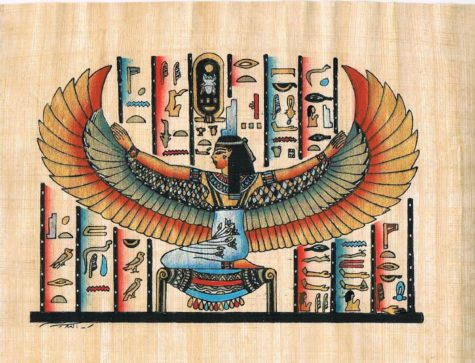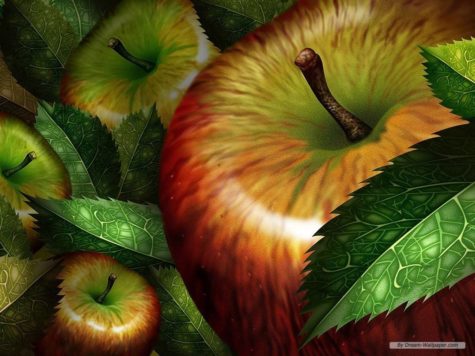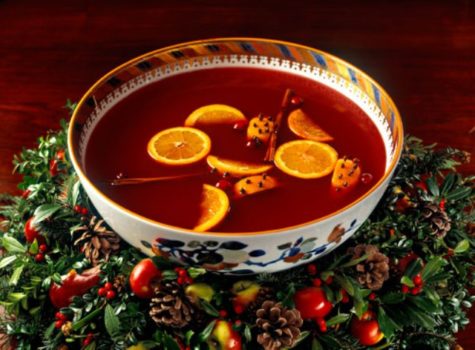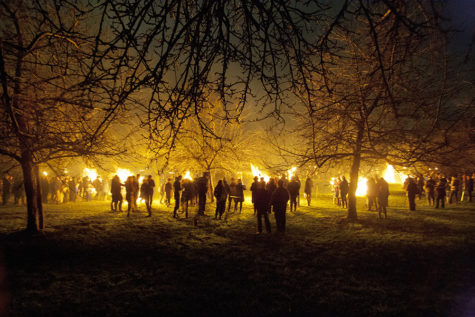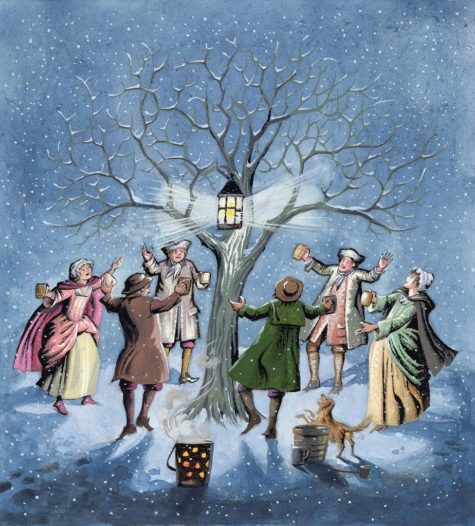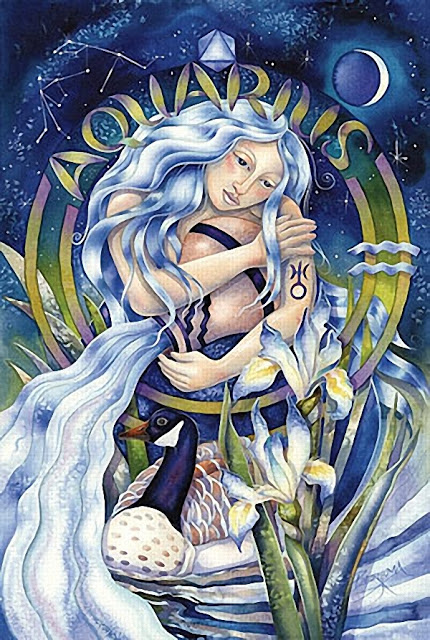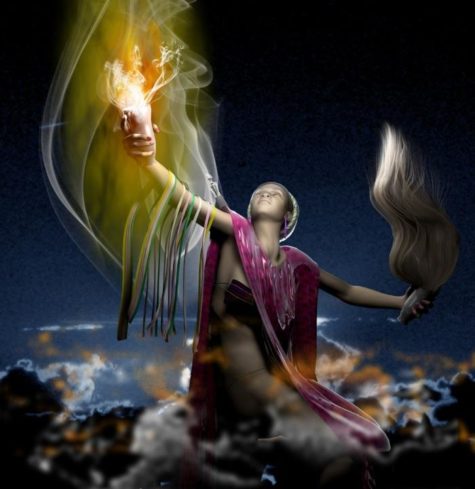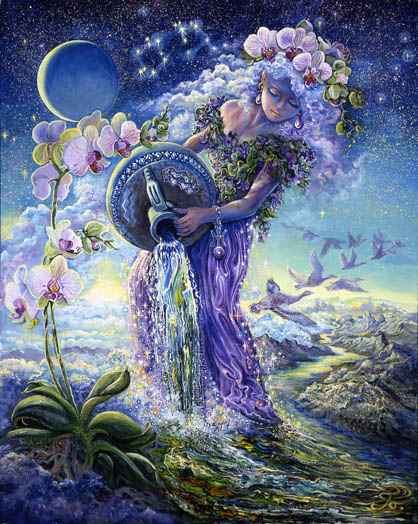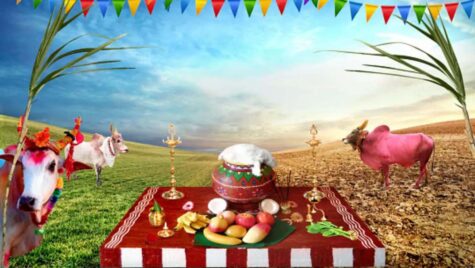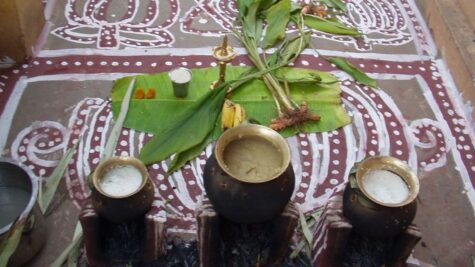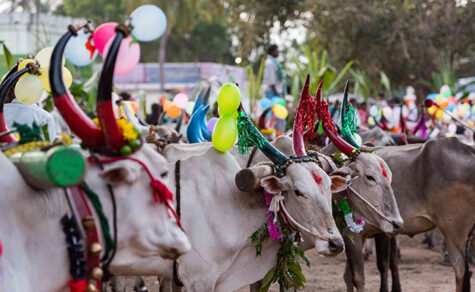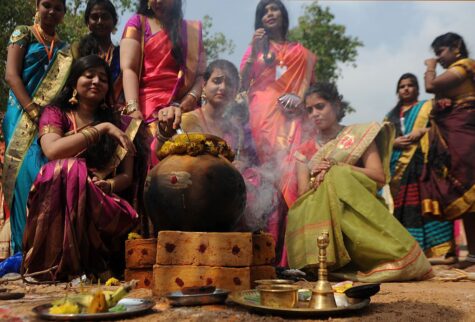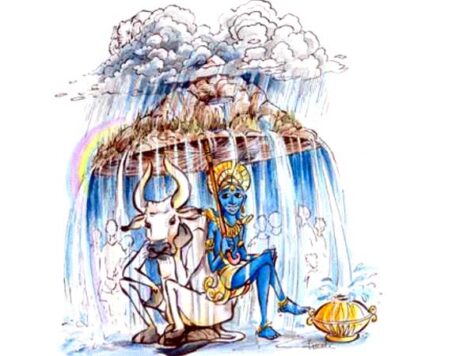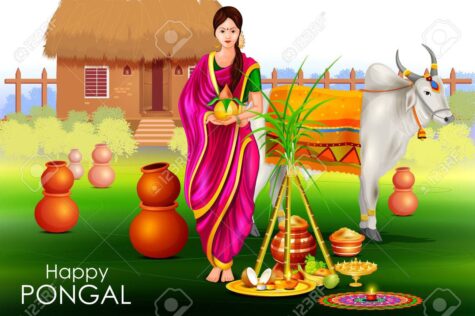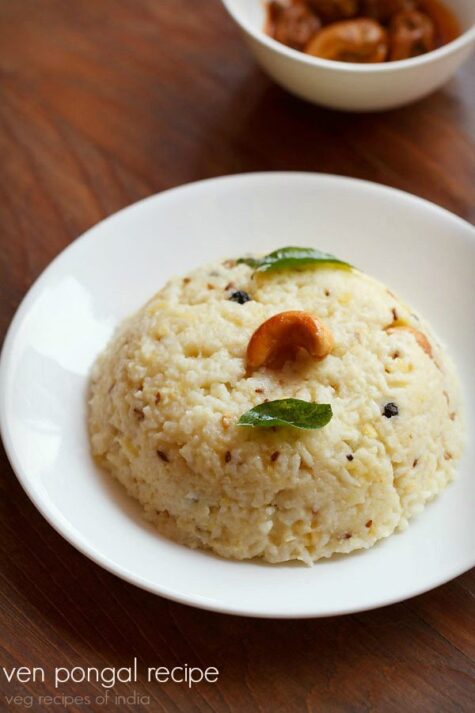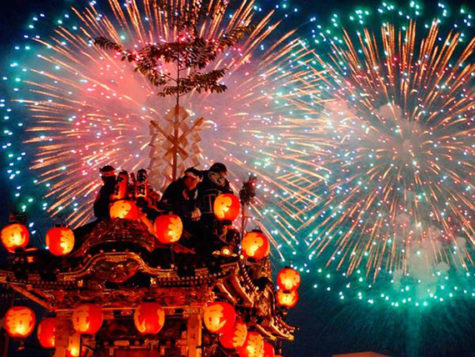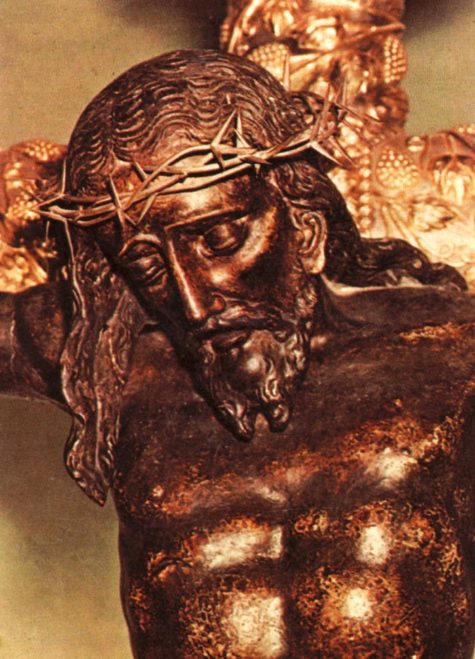January
Isis is the supreme goddess of the Egyptian tradition, patron of motherhood, mistress of magic. In ancient Egypt, January 2nd was celebrated as the Advent of Isis. Worshipers would gather together to celebrate Isis’ return from Phoenicia with the Ark of Osiris.
Celebrate and honor this sacred festival of Isis by creating a small altar in her honor. To do so, gather a white candle, an image of Isis, and any pearl or moonstone jewelry you fancy. Burn lotus, jasmine, or myrrh incense. When the altar space is prepared to your liking, take a moment to breathe and be present in the space. Invite Isis to join your space and spend some time in meditation in prayer with her. Ask her to bless the jewelry you brought.
January 1st is Apple Gifting Day. This unusual food holiday of unknown origin is a nice way to start the new year. Up until the 17th century, apple was a generic term for fruit other than berries. The apple symbolizes many things such as love, knowledge, bounty, good heath, beauty, and rebirth. One possible meaning behind giving an apple is to wish the recipient good health and a fruitful year. Give apples to friends and family. There are over 7,000 types of apples, so look for a new variety to give out each year.
From The Wisdom of Trees by Jane Gifford, we have this:
The apple teaches the lesson of love and faith, generosity and gratitude. Love not just between man and woman but as the driving force behind our existence and the relationships that we share with others; faith both in ourselves and in others; and generosity and trust in the understanding that a heart that is open to give and receive is both the gateway to personal happiness and fulfillment and the key that unlocks the secrets of the Otherworld.
The generous apple satisfies body, mind, and spirit, and warns against miserliness, for like attracts like. What we give will be the measure of all we receive.
Sources:
January 1st marks the beginning of a New Year, a year of new beginnings, new hopes, and new adventures. But why January 1st? To fully understand this, we must travel back in time, back to antiquity. The Ancient Romans began the new year in the middle of March. This was logical because at this time of year life begins to emerge from the dead of winter. Leaves begin turning green, flower buds sprout from the ground, and signs of new life are everywhere. Hibernating animals awake from their slumber and baby animals take their first steps.
Then along came Julius Caesar with his own ideas. During a trip to Egypt, Caesar had seen a marvelous, intriguing calendar. He brought it back to Rome where he and his scholars began to interpret and tamper with it to create the Julian Calendar. Unfortunately, while making these changes they completely lost the accurateness of the Egyptian calendar. During this time, they decided that January 1st would begin the new year.
After years of editing and corruption of the Julian Calendar, Pope Gregory XIII established the Gregorian Calendar in 1582. This calendar solidified the dates and was thought to better encompass the four seasons. Most countries use this calendar today.
There were and are other calendars used around the world. The Aztec, the Hindu, the lunar, and the Jewish calendars are a few examples. Asian countries follow the lunar calendar and celebrate the New Year in January or February while Diwali begins the New Year in India in October or November. The Jewish New Year commences in late September to early October.
For all people the New Year is a time of celebration. It is a time to reflect on our past, to forgive others, and to make amends. It is a time to look forward to our futures and to cherish our family and friends.
An optimist stays up until midnight to see the new year in.
A pessimist stays up to make sure the old year leaves.
-Bill Vaughan
To everyone, everywhere, we wish you a Happy New Year.
Found at: Web Holidays
“Welcome everything! Welcome all alike what has been, and what never was, and what we hope may be, to your shelter underneath the holly, to your places around the Christmas fire, where what is sits.”
~Charles Dickens
The wassail—a centuries old tradition from Great Britain—is a joy-filled party celebrating the Winter Solstice, Christmastime and happy tidings. Indeed, many of the traditions of this likeable event are the originators of well-known seasonal classics (like caroling, for one).
The word wassail itself comes from the old Norse “ves heill,” which literally means “be healthy.” It is a toast of goodwill and is at the heart of what wassailing is all about.
These days a wassail is a party, but, in centuries past wassailing mainly involved people singing carols from door-to-door, such as “Here We Come a Wassailing” or “We Wish You a Merry Christmas.” Sound familiar? The carolers would carry a bowl of wassail, which was a hot mulled wine or some kind of warm, apple-based beverage. Often people floated a piece of toasted bread on top of the steaming wassail, which was the origin of our modern-day expression “I would like to propose a toast.”
When carolers entered a home they would sing, share the wassail and receive eats and drinks themselves (such as plum pudding or shepherd’s pie), at which time toasts for a merry Christmas and happy tidings for a new year would be exchanged by all.
One legend about how Wassailing was created, says that a beautiful Saxon maiden named Rowena presented Prince Vortigen with a bowl of wine while toasting him with the words ‘waes hael‘. Over the centuries, a great deal of ceremony developed around the custom of drinking wassail. The bowl was carried into a room with a great fanfare, a traditional carol about the drink was sung, and finally, the steaming hot beverage was served.
Today, wassails are still held in homes or as public celebrations in many countries throughout the world, such as Great Britain, Canada and the U.S. The celebrations can be as simple as gathering some friends for hot cider to more elaborate celebrations involving the production of short plays (called mummer plays) or caroling through apple orchards.
To host your own wassail:
- Invite friends and family to share the occasion.
- Dress up the house for a festive holiday occasion.
- Serve a warm beverage, such as spiced apple cider, mulled wine or the like, from a bowl. This is a must! Otherwise, it’s not really a wassail.
- Serve food that’s warm and hearty, like beef pot pie or warm potato wedges with bacon, cheese and sour cream toppings. Christmas pudding or any kind of spice cake or pound cake should do nicely for dessert.
- Play festive Christmas music in the background. (Or, better yet, sing along with carols if so inclined.)
- Partake in games that involve teams of players, like charades, Cranium, Pictionary or Taboo.
The object is simply to have a good time and share the joy of the season!
One of the most popular Wassailing Carols:
A Wassail Bowl
Here we come a-wassailing
Among the leaves so green,
Here we come a-wassailing,
So fair to be seen:
Love and joy come to you,
And to you your wassail too,
And God bless you and send you,
A happy New Year,
And God send you,
A happy new year.
Here is a simple wassail ceremony.
- Heat a large container of ale or beer – about 3 or 4 pints.
- Add 1/2 cup sugar and 1/4 cup mixed spices (cinnamon sticks and whole cloves are also excellent)
- Cut up 2 or 3 small sweet apples and add those.
- Add 1 1/4 cup of pineapple juice and the same of orange.
- Squeeze 2 lemons into the brew.
Place over a slow flame; then, before it begins to boil, take off the heat and whip up some cream. Let this float on top of the brew like foam. Put into a suitably large bowl (the more ornate the better).
Toast several slices of bread, if you have fruit cake you can use pieces of that instead.
Now, with a few friends, go out to the tree or trees (see note below).
Dip pieces of toasted bread into the brew and place in the branches of the tree. Hang pieces of bread and cake from the higher twigs to encourage robins (guardian spirits of the trees). Bend the lower branches down and dip their ends in the brew.
Wet the roots liberally with the brew. Pass the rest around and when everyone is thoroughly warmed up, sing a wassailing song. Lift your glasses to the tree and shout “Huzzah!” three times as loudly as you can.
Note:
These don’t have to be apple trees, since any tree will benefit from a well-intentioned blessing, but it is traditional to wassail fruit-bearing trees. You can wassail the trees in your yard, near your home, or trees in some previously selected area.
Februalia, Februa, and also Februatio, was the Roman festival of ritual purification, later incorporated into Lupercalia. The festival, which is basically one of Spring washing or cleaning (associated also with the raininess of this time of year) is old, and possibly of Sabine origin. According to Ovid, Februare as a Latin word which refers to means of purification (particularly with washing or water) derives from an earlier Etruscan word referring to purging.
The Roman month Februarius (“of Februa,” whence the English February) is named for the Februa/Februatio festival, which occurred on the 15th day of the Roman month. A later Roman god Februus personified both the month and also purification, and is named for them. Thus, the month is named for the festival and not for the god.
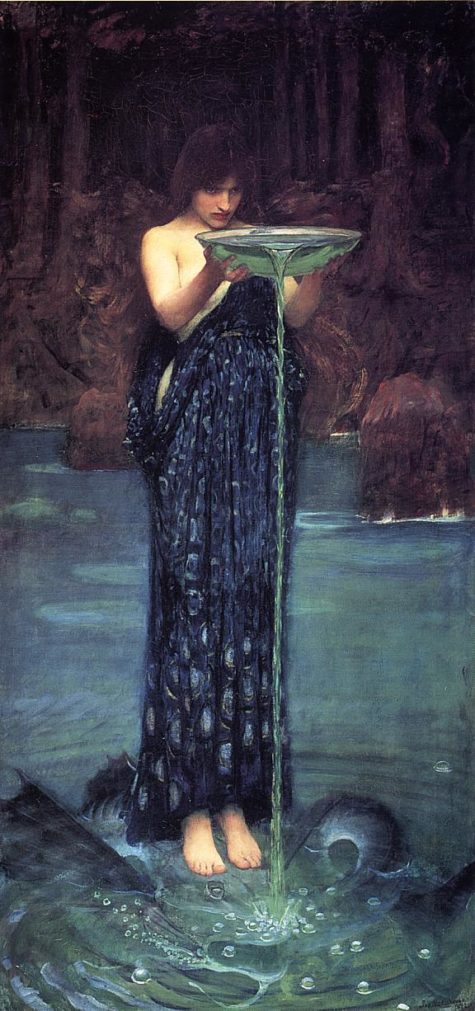
Here is a ritual for Februata, and is appropriate any day during the month of February:
- Color: White
- Element: Earth
- Altar: Spread with a clean white cloth and place thereupon four white candles and a bowl of water, very simply.
- Offerings: Clean something externally, and at the same time clean something internally.
- Daily Meal: Fasting for the day. Drink plenty of water.
Februata Invocation
The winter has lain heavily upon us,
Juno Februata, Queen of the new light,
And we are sunk in layers of thought
Like a hibernating mole
Beneath layers of earth.
Bring us forth into the light, Lady!
Let us remove all filth
From our bodies and our souls,
Making them a place of clarity.
Chant:
Februus Februus Lucina Lucina
(There is no further ritual; all silently take cleaning tools and being to thoroughly clean the entire building, ending with a ritual bath. As each cleans, they should meditate on what part of the mind or spirit needs cleansing, and let the physical cleansing aid in the spiritual aspect.)
Sources: Wikipedia and Pagan Book of Hours
Aquarius is the eleventh sign of the zodiac. The sun enters Aquarius at slightly different times each year, usually around Jan 21, sometimes the day before or the day after.
- Symbol: The Water Carrier
- Element: Air
- Gemstone: Amethyst
- Keyword: I Know
Aquarians are believed to be sympathetic, peace-loving, and strong-willed. They are independent, tolerant, broad-minded, intellectual humanitarians. Aquarians are progressive thiners, and are constantly looking ahead. They sometimes give the impression of being detached or aloof, as they can remove their emotions from everyday events.
From 365 Goddess, we have this for today:
- Themes: Justice; Tradition; Zeal; Femininity
- Symbols: Fire; Water
- Number: Nine
- Presiding Goddess: Oya
About Oya:
A Yoruban mother goddess and spirit of the river Niger. Oya flows with us through the last day of January, strengthening our passion for and appreciation of life. She is wild and irrepressible, like the fire she’s said to have created, yet Oya presides over matters of fairness and custom, using that fire as the light of truth. Artistic depictions of Oya show a nine-headed woman whose bosom speaks of fertile femininity.
To Do Today:
Enjoy a glass of water when you get up to begin generating Oya’s zest for life in your body and soul. This is also very suited to the energies of the day. Aquarius represents the Water Bearer who continually pours inspiring, creative waters from celestial spheres into our lives.
Get out and do something today. Invoke Oya through your pleasure and pure excitement. Dare to dream; then try to make that dream come true somehow.
If there’s some area in your life that needs more equity, try making this Oya charm:
Take any small candle and carve Oya’s name into it. Have a glass of water nearby. Light the candle to invoke the goddess. Hold the water over the candle, saying:
What injustice consumes,
Oya’s waters quell.
Drop a little water on the candle, then trim off the taper, carrying it with you to draw justice to you.
More About the Sun in Aquarius:
The Sun is in Aquarius from approximately January 20 to February 18, depending on the year.
- Ruler: Uranus
- Modality: Fixed
- Season: Winter
- Metal: Uranium
- Stone: Amethyst
- Color: Sky Blue
- Flowers: Violet; Carnation; Lily
- Anatomy: Ankles, shins, circulation
- Attributes: individualistic, assertive, independent, humanitarian, inventive, original, eccentric, opinionated, intellectual, idealistic, cool, friendly, detached
One of the standout characteristics of those born under the Sun Sign of Aquarius is their unwillingness to follow the beaten track. With advancement and progress on their minds, there can be an irreverence to old and outdated ways of thinking and doing things.
Many Aquarians aim to free themselves of personal and social conditioning. Although open to change in theory, Aquarians can be surprisingly stubborn. Their idealism runs strong, but they can be very fixed in their opinions.
Often a bit aloof and even standoffish, Aquarians nonetheless are usually well-liked. They are curious and observant, and tolerant in a broad sense. Prejudice and bias is offensive to the typical Aquarius.
Aquarians are generally very clever, witty, and intellectual. They value progress and frankness. It’s difficult to throw Aquarians for a loop—they’re generally on top of things.
There is a bit of reformer in Aquarius. They’ll try to get you to see through superficiality, and encourage you to be open and forthright. “Be true to yourself” and “Don’t follow the crowd” are mottos we easily associate with this sign.
Aquarians need space and value personal freedom. Any attempt to box them in will likely fail. They’ll happily return the favor; and they will treat people from all walks of life as equals. Equality and fairness are hallmarks of the sign. If you’re quirky and “different”, all the better.
Source: Cafe Astrology
Pongal is the first harvest festival of the year and the celebrations go on for four days. This is a sacred festival for Tamilians all over the world and the best celebrations take place in the state of Tamil Nadu. It falls on January 14 this year and the date pretty much remains constant over the years, sometimes it falls on January 15 as well. Pongal is also called Thai Pongal as the festival marks the beginning of the Tamil month Thai. This is considered to be an auspicious one and people celebrate it with much enthusiasm.
Thai month is believed to bring good luck by vanishing one’s problems away and therefore people look forward to celebrating Pongal. The harvest festival is celebrated over four days with each day having a different ritual. Here is how Pongal is celebrated in Tamil Nadu.
Pongal is a harvest festival and since rice is one of the main crops grown here, it is given due importance during the rituals. Even turmeric and sugarcane are grown in Tamil Nadu. The harvest festival is in the month of Thai which is considered auspicious for weddings as well.
Pongal is all about letting go of the past and welcoming new things in life. Pongal is also known as Thai or Tai Pongal. People celebrate it to thank Lord Sun for a good harvest season. The four-day festivities are:
- Bhogi Pongal:
The first day of the four-day festivity is Bhogi Pongal. It marks the last day of Marghazi, Tamil month. People celebrate it together by lighting bonfires and burning discarded items.
The first day of Pongal is celebrated by paying respect to the rain gods who are responsible in ensuring a good crop year. People offer their prayers by thanking Indra for this blessings and ask for a good year again. People also light up a bonfire and throw the items they want to discard in it. In the evening, women sing and dance around the bonfire which helps keep warm as well as the night gets chilly.
- Surya Pongal:
The second day is Surya Pongal. It is dedicated to Lord Sun or Surya Dev. People thank him for providing a good harvest and seeking blessing for happiness and prosperity. On this day, the houses are decorated with banana and mango leaves.
The second day of the harvest festival has more elaborate rituals where the women of the house decorate the area outside the house using white powder in the morning. Then, rice is boiled in milk in an earthen pot outside the house. Sugarcane sticks are used for decoration along with banana leaves and turmeric plant. This rice is offered to the sun god who again is responsible for a good harvest.
The word Pongal translates to boil over and boiling rice signifies its name. On this day, people also wear new, ethnic wear for the celebrations.
- Mattu Pongal:
The third day marks Mattu Pongal. Mattu means cow, cattle or bullock. This celebrates cattle as they provide dairy products, fertilizers and agriculture support. This day of Pongal is reserved for offering prayers to cows who are considered a sacred animal for Hindus.
The cows horns are painted and adorned with bells and flowers around their neck. Women then perform aarti to get rid of any evil eye and seek the animal’s blessings. Cows are then paraded in the village and the tiny bells reverberate their arrival. There is a cheer in the atmosphere and villagers also organize cattle races on this day.
- Kanum Pongal:
The last day is Kanum Pongal. This day strengthens the bond between people. A lot of people come together and celebrate it.
The last day of Thai Pongal celebrations end with a pooja right outside the home. Women wake up in the morning and before bathing, they place a washed turmeric leaf on the ground. Different kinds of rice are placed on it along with sugarcane sticks, betel nuts and more. The pooja performed is essentially for their brothers, to ensure they prosper in life. This marks the end of the harvest festival celebration in Tamil Nadu.
Pongal Stories
There are two major stories that revolve around the celebration of Pongal.
Once, Lord Shiva had asked Basava, his bull, to travel around the world to inform people to eat once a month, have a bath and oil massage every day. Basava communicated exactly the opposite of what he was told. He told people to bathe once a month and eat everyday. This angered Lord Shiva and he ordered Basava to go into exile. He was made to assist people while ploughing. This is why cattle are linked with the harvest.
There is another story to it. According to a few people, Lord Krishna told the people of Gokul to stop worshipping Lord Indra as he was arrogant and was filled with pride. This angered Lord Indra. He caused thunderstorms and flooding. To protect people, Lord Krishna lifted Mount Govardhan on his little finger to provide shelter to people. Lord Indra realized his mistakes and asked for forgiveness from Lord Krishna.
Pongal Quotes and Invocations:
These are actually meant for greeting cards, but I thought they would make something nice to say over a meal, or during a meditation during these four days.
- As you offer thanks to the hero of your farmland – the Cattle, May the festival of Pongal which heralds the beginning of harvest season Bring you happiness, joy, prosperity and wealth. Pongalo Pongal!
We thank sun for burning himself to save us.
We thank plants sacrificing their life for us.
And we thank all the creatures helping us to live in this world for some time.
- The sun shines bright
To guide and lead us the way
Towards bountiful harvest season
May we be blessed with prosperity and joy
May the sweetness of overflowing milk and sugarcane
Fill our home with harmony and happiness
- May the love and affection
Overflow from your heart
like Pongal milk from the pot
Pongalo Pongal
As you shout Pongalo Pongal
To welcome the prosperity and wealth
along with the overflowing Milk
I wish you everlasting happiness and joy
Ven Pongal Recipe
Pongal is a delicious South Indian porridge made with rice and yellow moong lentils. It can be made sweet or savory. Here I share the savory version of pongal recipe known as Ven Pongal or Khara Pongal laced with the wonderful flavors of cumin, asafetida, curry leaves, ginger and black pepper. Not to forget the lovely aroma of ghee, in it.
Main Ingredients:
- ½ cup rice – any medium to short grained or regular rice, 100 grams
- ¼ cup moong dal or 60 grams moong dal
- ½ teaspoon cumin seeds – lightly crushed
- ⅛ teaspoon asafoetida (hing)
- 1 inch ginger – chopped or 1 teaspoon heaped chopped ginger
- 3 to 3.25 cups water or add as required
- salt as required
For Tempering:
- 1 teaspoon cumin seeds
- 1 teaspoon black peppercorns whole or crushed, you can also add ½ teaspoon black pepper
- 1 sprig curry leaves or 10 to 12 small to medium curry leaves
- 10 to 12 cashews – whole or halved
- 2 to 3 tablespoons Ghee (clarified butter)
Instructions:
Pick moong lentils first to get rid of stones if any. Then heat a small pan or a small kadai and add the moong lentils. On a low flame stirring often roast the moong lentils till they become aromatic. The moong lentils only need to be roasted till they become aromatic. No need to brown them.
Now take them in another bowl or you can use the same pan for rinsing. Add rice in the bowl containing the roasted moong dal. Rinse both rice and roasted moong dal a couple of times with water. Drain very well and then add them in a pressure cooker.
Now add the following ingredients:
- Cumin seeds
- Asafetida (hing)
- Chopped ginger
- Salt as per taste.
Pour in 3 to 3.25 cups water. The amount of water to be added depends on the consistency you want and also on the quality of moong dal. Pressure cook on a medium to high flame for 7 to 8 whistles or 11 to 12 minutes.
Let the pressure settle down on its own and then you remove the lid to check the doneness and consistency. If the pongal has a consistency like that of pulao, then add ½ to 1 cup hot water and mix very well.
Both the rice and the moong dal should be cooked very well. If you want you can even slightly mash the cooked rice and moong lentils. If cooked well, then cover with the lid and keep aside.
Tempering:
In another small pan, heat the ghee. Add the cumin seeds. Let them splutter. Then add the cashews. Fry until the cashews become light golden. Once they begin to get light golden, then add black peppercorns and 10 to 12 curry leaves.
Stir very well and fry until the curry leaves become crisp. The black pepper should also be fried well.
Putting It All Together:
Now pour this entire tempering on the pongal. Mix very well. Cover with the lid (with the vent weight/whistle on the lid) and keep ven pongal aside for 5 to 6 minutes. This allows the tempering flavors to infuse with the pongal and the aroma to stay in. Then remove the lid and serve hot with coconut chutney or sambar.
Sources:
Shinto holy day marking a new year. On this day the faithful visit shrines to thank the kami (spirits within objects in the Shinto faith), ask the kami for good fortune, and make resolutions for the year ahead.
Traditionally, Shinto practitioners observe this New Year holiday by visiting the shrines, mostly at midnight and praying for the renewal of their heart, prosperity and health in the year to come. It is also common to visit close friends and family to express good wishes.
This festival concentrates on the deep unrecognized awareness and respect for the divine energy that permeates all forms of life. It is one of the most significant yearly festivals in Shintoism.
Though the New Year is predominantly celebrated on the first day of the year, traditionally the Shinto’s celebrate Gantan-sai for a prolonged span of seven days.
Much like Christmas for Christians, Gantan Sai has become a national holiday in Japan and expanded out past the Shinto religious practices and evolved into a national holiday. It is referred to as the Japanese New Year or Shogatu .It is observed on the first day of the Gregorian calendar i.e. the 1st of January and is the annual New Year celebration of the Shinto religion.
Originally, the date of the Japanese New Year was decided according to the Chinese Lunar Calendar and the date varied each year. However, in 1873, five years since the Meiji Restoration, the people of Japan adopted the Gregorian calendar and fixed the date of Japanese New Year or Shogatu to be the 1st of January every year, and it has been so ever since.
Traditions and Practices:
During this festival, most Shinto’s spend the holiday by visiting sacred Shinto temples at the hour of midnight.
During this visit, they wear their finest clothes and pray that their hearts be renewed and purified of all dirt and uncleanliness.
- Blessings for health, happiness and prosperity are also requested for the upcoming year.
- This festival also witnesses friends and families coming together to wish well for each other.
On this day, people eat traditional food with their families. Gantan-sai day meals involve a special compilation of dishes known as “Osechi”. The typical New Year Day menu comprises of dishes like Ozoni a soup, Mochi with vegetables, Kamabokoa puree of steamed white fish, Kurikinton mashed sweet potato with chestnut and Kuromame sweet black beans.
Source: Gatan-sai
The Black Christ of Esquipulas is a wooden image of Christ now housed in the Cathedral Basilica of Esquipulas in Esquipulas, Guatemala. A lovely Baroque structure painted a gleaming white, the basilica dominates the town’s skyline. Remarkably, it has survived many earthquakes over the centuries with little damage.
The image is known as “black” because over more than 400 years of veneration its wood has acquired a darker hue, although such a name is relatively recent – in the 17th century it was also known as the “Miraculous Lord of Esquipulas” or the “Miraculous Crucifix venerated in the town called Esquipulas”.
The Black Christ is housed in a glass case on the altar at the east end of the basilica. A large statue that depicts Christ suffering on the cross, it is part of a Crucifixion group with Mary Magdalene and St. John.
Pilgrims stand in line along the west side of the church to see El Cristo Negro up close, sometimes waiting for over an hour. After viewing the statue and saying their prayers, pilgrims back away from it on the other side, believing it an offense to turn their back on the holy image.
Tens of thousands of devout Catholics cram into Esquipulas during the annual celebration of the Black Christ which happens on January 15th. They come to pray and ask for help in front of a religious icon which has been credited with miraculously curing Pedro Pardo de Figueroa, the Archbishop of Guatemala, from a serious illness in 1737.
The largest number of pilgrims come from Guatemala, El Salvador, Honduras, Mexico, Nicaragua and other Central American countries. The January 15th festival is also marked in the United States of America in cities such as Los Angeles, New Jersey and New York with a high Central American population.
Special processions and services are also held on July 21-27, and during Holy Week each year.
History of Esquipulas Basilica
The statue of the Black Christ (El Cristo Negro) was comissioned by Spanish conquistadors for a church in Esquipulas. It was carved in 1594 by Quirio Cataño in Antigua and installed in the church in 1595. By 1603, a miracle had already been attributed to the icon, and it attracted increasing numbers of pilgrims over the years.
The history of the Basilica begins in 1735, when a priest named Father Pedro Pardo de Figueroa experienced a miraculous cure after praying before the statue. When he became Archbishop of Guatemala, he commissioned a beautiful basilica to properly shelter the beloved statue. The church was completed in 1759.
Perhaps an even more impressive miracle is the fact that Esquipulas was the site of a Central American peace summit which laid the groundwork for what became the Guatemalan Peace Accords of 1996 which ended the country’s ghastly 36 year civil war.
The Basilica de Esquipulas is such a major religious site that Pope John Paul II paid a visit in 1996 to mark the 400th anniversary of the church which the Pope is said to have called “the spiritual center of Central America.” In 2009, celebrations were held to mark 250 years since the basilica’s construction.
Sources: Wikipedia, Sacred Destinations and Trans Americas
Thorrablot (Þorrablót) was a sacrificial midwinter festival offered to the gods in pagan Iceland of the past. It was abolished during the Christianization of Iceland, but resurrected in the 19th century as a midwinter celebration that continues to be celebrated to this day. The timing for the festival coincides with the month of Thorri, according to the old Icelandic calendar, which begins on the first Friday after January 19th (the 13th week of winter). Or, on the 19th when it falls on a Friday.
Origins of the name “Thorri” are unclear but it is most likely derived from Norwegian king Thorri Snærsson, or Thor the God of Thunder in the old Nordic religion.
Today Thorrablot are common events among Icelanders everywhere and can be anything from an informal dinner with friends and family to large organised events with stage performances and an after-dinner dance. These large Thorrablot celebrations are usually arranged by membership associations, associations of Icelanders living abroad, and as regional festivals in the countryside.
On this occasion, locals come together to eat, drink and be merry. Customary, the menu consists of unusual culinary delicacies, known as traditional Icelandic food, which consist of different versions of animal parts, either fermented in lactic acid, rotten, salted or soured. These include rotten shark’s meat (hákarl), boiled sheep’s head, (svið) and congealed sheep’s blood wrapped in a ram’s stomach (blóðmör)! This is traditionally washed down with some Brennivin – also known as Black Death – a potent schnapps made from potato and caraway.
Even though most Icelanders do indulge in the traditional foods at least once a year, not many foreigners, nor the younger generation of Icelanders like the food.
After the Thorrablot dinner traditional songs, games and story telling are accompanied by dancing and in true Icelandic style continue until the early hours of the morning! If you fail to receive a personal invitation to a family feast, local restaurants will often add Thorrablot color and taste to their menus.
